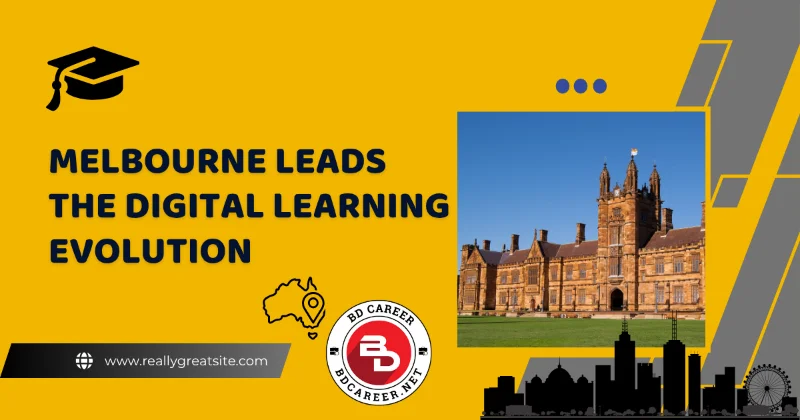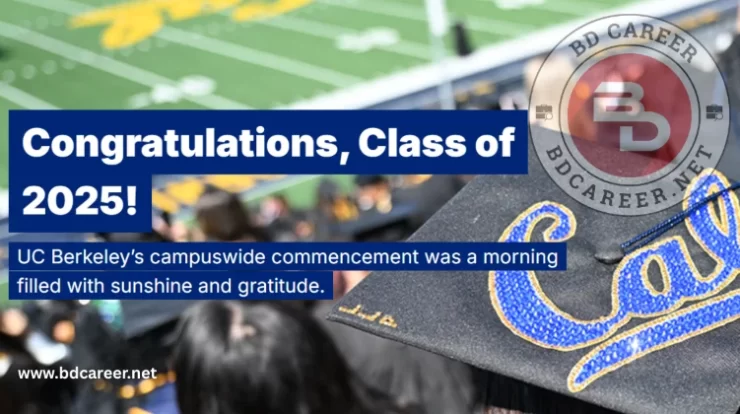
Higher education institutions struggled to transition to online platforms as the COVID-19 pandemic disrupted worldwide enrollment in 2020. Although many saw it as a stopgap, the University of Melbourne viewed it as a transformative possibility. Through long-term investment in digital infrastructure, innovation in the hybrid learning model, and a student- and teacher-centered approach, the University positioned itself as a leader in reinventing 21st-century education. Melbourne’s digital learning plan is a forward-looking guide for the global academic community today, as the world prepares for a post-pandemic reality.
Contents
- A New Era for Higher Education
- The Digital Pivot: Immediate Response and Long-Term Vision
- E-Learning Innovations at Melbourne
- Hybrid Learning Models: Flexibility as the New Standard
- Faculty and Student Perspectives
- Addressing Student Concerns on Online Learning
- Enhancing Educator Capabilities Through Technology
- Fostering a Collaborative Academic Environment
- Measuring Impact and Academic Outcomes
- Global Collaboration and Leadership
- Looking Ahead: The Future of Higher Education
- Conclusion
A New Era for Higher Education
The pandemic accelerated an inevitable shift: the digitalization of higher education. Physical classrooms emptied overnight, but learning had to continue. This forced institutions to reassess not only the tools they used but the very structure of teaching and learning. For the University of Melbourne, it was a catalyst to expand its educational philosophy beyond the lecture theatre and into the digital space, permanently.

The Digital Pivot: Immediate Response and Long-Term Vision
In early 2020, Melbourne launched a university-wide transition task force to oversee remote learning, prioritize platform stability, and train faculty at scale. What began as crisis management evolved into a strategic digital learning initiative. Within months, Melbourne had adopted a new learning management system (Canvas), enhanced its video conferencing capabilities (Zoom, Echo360), and established Digital Studios for producing high-quality course content.
The leadership didn’t focus on surviving the pandemic; they were intent on future-proofing the University’s Educational model. A long-term Digital Learning Strategy was formalized in 2021, integrating technological innovation, pedagogical flexibility, and global accessibility into the core academic mission.
E-Learning Innovations at Melbourne
Melbourne’s investment in cutting-edge educational tools was central to its reinvention. Among its most innovative practices:
- Immersive Learning Technologies: The University offers students virtual lab environments and clinical scenarios, testing augmented reality (AR) and virtual reality (VR) in medical and engineering courses.
- AI-Driven Learning Analytics: Analysed student interactions with course materials, intelligent algorithms identified early declining engagement, and allowed tailored academic support.
- Flipped Classrooms and Interactive Modules: Courses were redesigned to enable students to participate in interactive seminars during synchronous sessions and engage with lectures online at their own pace.
For architectural students, the Melbourne School of Design incorporated virtual reality (VR) walkthroughs, while the Faculty of Science developed gamified simulations to enhance their knowledge of intricate biological systems.
Hybrid Learning Models: Flexibility as the New Standard
Melbourne did not adhere to pre-2020 standards when pandemic restrictions were relaxed. Instead, it adopted a hybrid approach that combined the best of digital and physical earning. With recordings available for flexible review and playback at their convenience, students can stream courses live or attend them in person.
Blended learning evolved from a choice to a design guiding concept. Every course was evaluated in terms of the most effective delivery method. Online lectures and theory-heavy materials proliferated; labs, discussions, and group projects, which stress in-person interaction, took center stage. For international students, working students, and those with caregiving duties, especially, this hybrid adaptability has proved quite helpful.
Under Melbourne’s xAP (Academic Programming) program, blended postgraduate degrees and modular short courses enable students to pace their studies, stack credentials, or pivot across subjects more easily.

Faculty and Student Perspectives
The change depended much on faculty buy-in. Professional development initiatives focused on digital pedagogy, learning design, and online student engagement drew over 2,000 academic staff members. Custom toolkits created by the University’s Research for the Study of Higher Education helped to direct this change.
Generally speaking, student comments have been favourable, with thanks for the adaptability and ease of digital learning.. Still, there are difficulties, especially in areas such as screen fatigue, isolation, equitable access to devices, and connectivity. Melbourne initiated programs to ensure accessible course design for students with disabilities, provide loan computers, and subsidize internet contracts to support this effort.
The University’s Union highlights the ongoing demand for hybrid models, as 72% of students want the flexibility to continue attending lectures online, even if they value in-person contact.
Addressing Student Concerns on Online Learning
Some students have voiced concerns about the shift towards online lectures, noting a perceived decline in value compared to conventional in-person encounters, despite advancements in digital education. The University is investigating strategies to strike a balance between online and in-person instruction, so that students receive a thorough and engaging education that meets their expectations.
Enhancing Educator Capabilities Through Technology
The University has created a suite of instructional software tools to help teachers adjust to digital media. These tools enable educators in various fields to refine their approaches, track student development, and tailor activities to suit different learning levels. The University ensures that teaching quality remains high in digital and hybrid learning environments through investments in educator development.
Fostering a Collaborative Academic Environment
The University of Melbourne continues to encourage academics’ collaboration to enhance digital learning. Encouraging collaborative teaching and joint resource development can help teachers create more dynamic and interactive online environments. This cooperative method benefits teachers in navigating the complexity of digital learning while also enhancing the classroom experience.
Measuring Impact and Academic Outcomes
Key to Melbourne’s strategy is quantifying the success of digital and hybrid learning. With considerable increases in engagement among first-year students who utilise interactive digital tools, academic performance statistics from 2021 to 2023 revealed stable or improved outcomes across most faculties.
Course satisfaction ratings stayed strong, and attendance in online lessons was much above expectations. Learning Analytics at Melbourne (LAM), the University’s analytics tool, tracks real-time data on student involvement and performance, therefore facilitating proactive academic advice and curriculum development.
The University has been able to hone hybrid forms semester by semester thanks to this evidence-based approach.

Global Collaboration and Leadership
Melbourne hasn’t created higher education. Among the worldwide digital learning alliances in which the University actively participates are Universitas 21 and the Digital Education Network of the Group of Eight (Go8) Australian universities. It promotes international standards for digital pedagogy and exchanges best practices via these networks.
Melbourne partnered with edtech companies in 2022 to co-develop virtual lab tools and adaptive learning software now used in partner universities across Australia. These partnerships highlight its significance worldwide in digital higher education as well as its leadership nationally.
Looking Ahead: The Future of Higher Education
The University sees digital learning not as a replacement for traditional education, but as its evolution. In the future, key initiatives include:
- Microcredentials: Short, skill-based programs aligned with industry needs.
- Lifelong Learning Hubs: Continuous access to learning for alumni and working professionals.
- AI chatbots and tutors offer 24/7 academic support and direction.
- Virtual Global Classrooms: To promote cross-cultural conversation, co-taught courses with affiliated universities.
The 2030 Education Strategy for Melbourne envisions a flexible, inclusive, and globally connected learning environment where students can choose their own pace, course, and study site without compromising quality.
Conclusion
The University of Melbourne’s response to the epidemic exceeded simple damage control. It turned into a launchpad for reinventions. Melbourne has set a new standard for higher education by embracing innovative ideas and advanced technology. They support their teachers, listen to students, and continually improve their teaching methods.
Institutions all around are turning to Melbourne’s M Digital, and hybrid learning is not just typical but expected. By doing this, they are not only choosing tools but also a mindset: that education must be as flexible and vibrant as the planet its pupils will inhabit.





